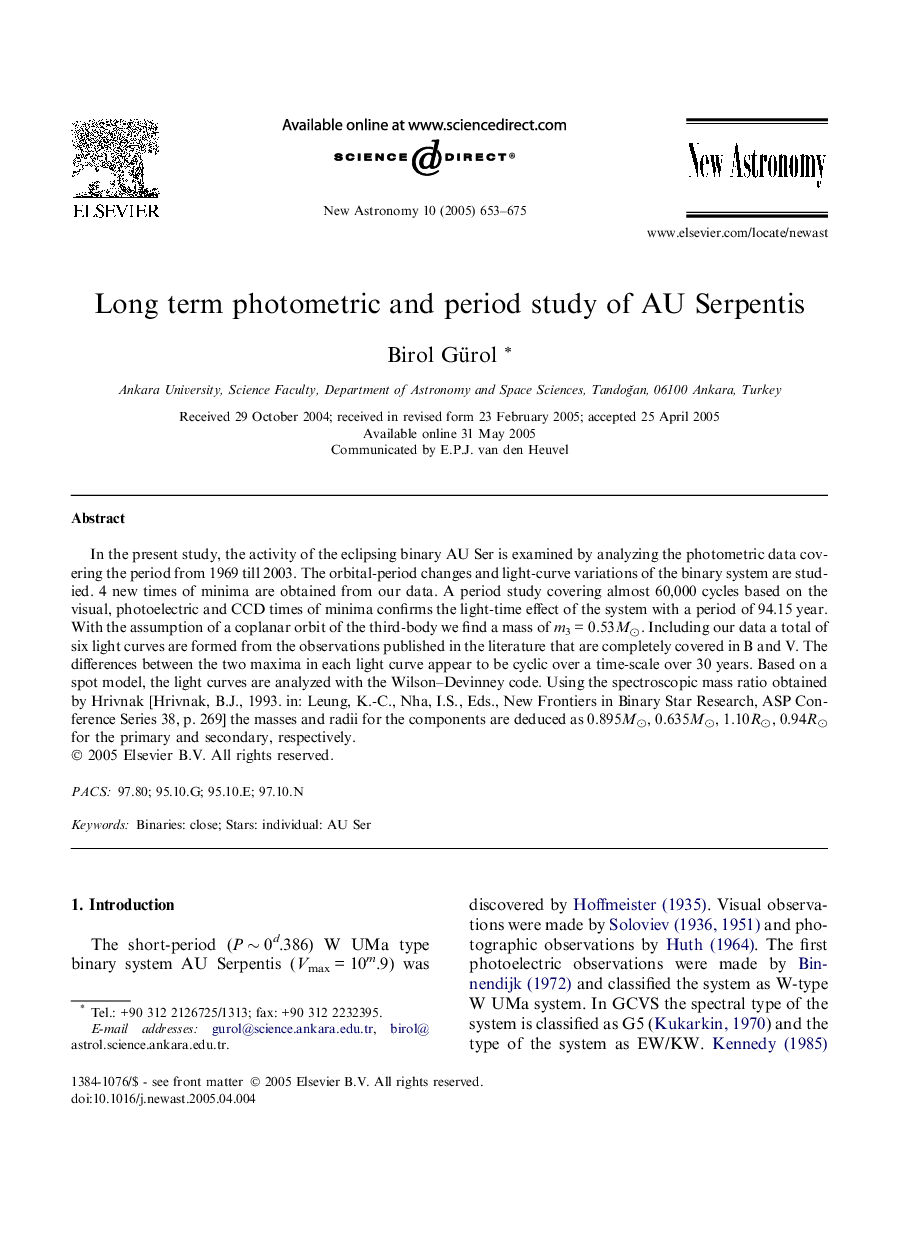| Article ID | Journal | Published Year | Pages | File Type |
|---|---|---|---|---|
| 9827957 | New Astronomy | 2005 | 23 Pages |
Abstract
In the present study, the activity of the eclipsing binary AU Ser is examined by analyzing the photometric data covering the period from 1969 till 2003. The orbital-period changes and light-curve variations of the binary system are studied. 4 new times of minima are obtained from our data. A period study covering almost 60,000 cycles based on the visual, photoelectric and CCD times of minima confirms the light-time effect of the system with a period of 94.15 year. With the assumption of a coplanar orbit of the third-body we find a mass of m3Â =Â 0.53Mâ. Including our data a total of six light curves are formed from the observations published in the literature that are completely covered in B and V. The differences between the two maxima in each light curve appear to be cyclic over a time-scale over 30 years. Based on a spot model, the light curves are analyzed with the Wilson-Devinney code. Using the spectroscopic mass ratio obtained by Hrivnak [Hrivnak, B.J., 1993. in: Leung, K.-C., Nha, I.S., Eds., New Frontiers in Binary Star Research, ASP Conference Series 38, p. 269] the masses and radii for the components are deduced as 0.895Mâ, 0.635Mâ, 1.10Râ, 0.94Râ for the primary and secondary, respectively.
Keywords
Related Topics
Physical Sciences and Engineering
Physics and Astronomy
Astronomy and Astrophysics
Authors
Birol Gürol,
